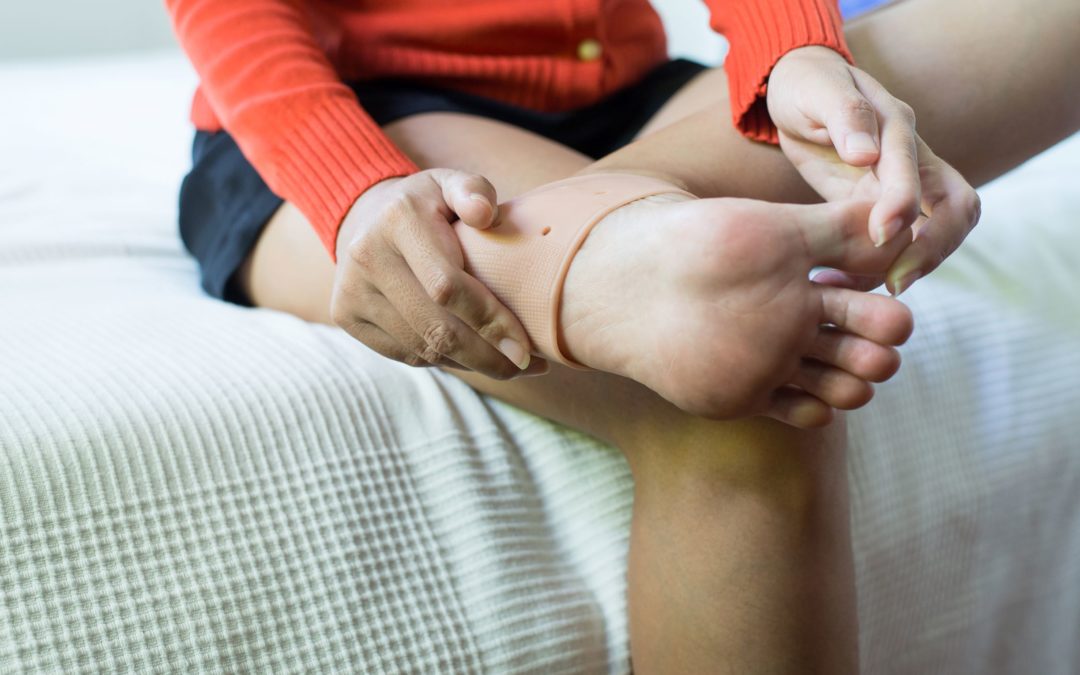A sharp, shooting pain in the heel of your foot can be debilitating. It can leave you unable to walk properly, unable to sit comfortably, and may even make it difficult for you to get out of bed. In many cases, this pain is caused by a condition known as plantar fasciitis, the treatment of which can be challenging.
It’s important to see a doctor such as a podiatrist, family physician, orthopedic, or physiatrist to determine that what’s causing your pain is indeed plantar fasciitis. If it is, there are several ways to treat the condition, relieve the pain, and prevent future flareups.
Basic Facts about Plantar Fasciitis
The word “plantar” refers to the sole of the foot, and the word fasciitis comes from the word fascia, which is a band of tissue.
Plantar fasciitis is an inflammation of the band of fibrous connective tissue running along the bottom of the foot, from the heel to the ball. The inflammation occurs when the plantar fascia is strained beyond its normal extension, causing the soft tissue fibers of the fascia to tear or stretch.
Individuals who may be at the highest risk for plantar fasciitis are those who:
• Are between the ages of 40 and 60
• Are overweight
• Participate in certain types of exercises, especially sports on hard surfaces
• Have occupations that require standing or walking for long periods of time
Other factors that may lead to the inflammation is how the feet are shaped and/or how you walk, as this may distribute your weight unevenly and place added stress on the plantar fascia. Along these lines, the issue may be aggravated by shoes that lack appropriate support.
Heel Pain Cycle
Although it’s usually temporary, plantar fasciitis may take quite a while to heal due to a cycle of pain.
First, stretching the plantar fascia for a long period of time causes the pain. When you rest, you get temporary relief because the plantar fascia is no longer being stretched.
However, when you begin moving again, the movement essentially “shocks” this now relaxed muscle and pulls on the heel, causing more pain. That’s why the pain may be more severe when you get out of bed after sleeping.
Further complicating the issue is the deceptive relief; the pain may be alleviated after you take the first several steps, but walking further stretches the plantar fascia and recreates the pain.
An additional factor to consider is that individuals may walk in a different way in order to reduce the pain, which can irritate that individual’s knees, hips, or back.

Rolling your foot over a foot roller or a cold water bottle can help relieve the heel pain associated with plantar fasciitis.
Treatments and Remedies
Approximately 2 million patients are treated for this condition every year.
Despite the challenges, following are some of the many home remedies and medical treatment options that can relieve the pain and prevent further complications.
1. Discontinue the activity that causes the pain.
If possible, discontinue that strenuous sport for a few days, or try to take some time off work until your condition improves.
2. Ice the heel.
Roll your foot over a cold water bottle or ice for 20 minutes three or four times a day. It’s an effective way to relieve the pain and, as a bonus, can be a general stress reliever.
3. Complete specific exercises.
Specific exercises geared toward loosening your calf muscles can help. Ask one of the Team Rehabilitation physical therapists here at the Shelby Macomb Medical Mall how to perform these exercises.
4. Pain relief medications can help.
Over-the-counter, anti-inflammatory pain relievers, such as ibuprofen, can temporarily relieve the pain. Do not rely on this method of treatment for an extended period of time.
Another option is cortisone injected into the plantar fascia, which should only be done on a limited basis. Talk with a podiatrist, such as Dr. Giordano or Dr. Russo of Shelby Foot & Ankle here at the Shelby Macomb Medical Mall, to see if cortisone injections are right for you.
5. Invest in supportive shoes.
Shoes with thick soles and cushioning can help, as can shoes that keep your feet positioned correctly while you are walking. Consider buying pressure-relieving foot pads to place inside your shoes.
6. Surgical options may be considered.
If the pain continues for more than a year and affects a patient’s quality of life, surgical remedies are available. These include a gastrocnemius recession procedure or a plantar fascia release procedure.
For more information about heel pain or plantar fasciitis treatment options, make an appointment to see a doctor or therapist here at the mall, such as those with Great Lakes Physiatrists, Associated Orthopedists of Detroit, Team Rehabilitation, or Shelby Foot & Ankle.

Recent Comments